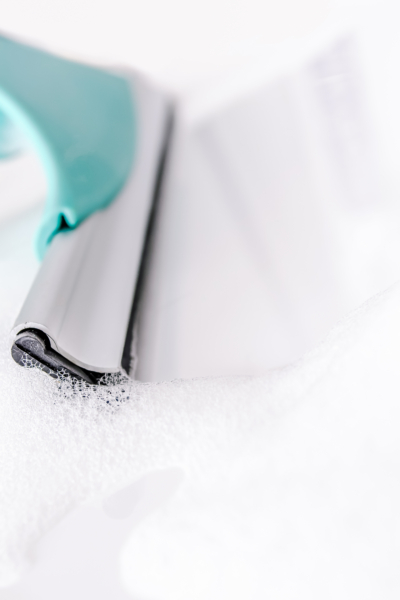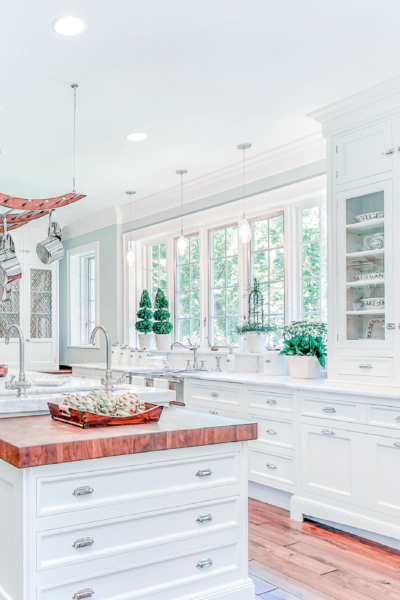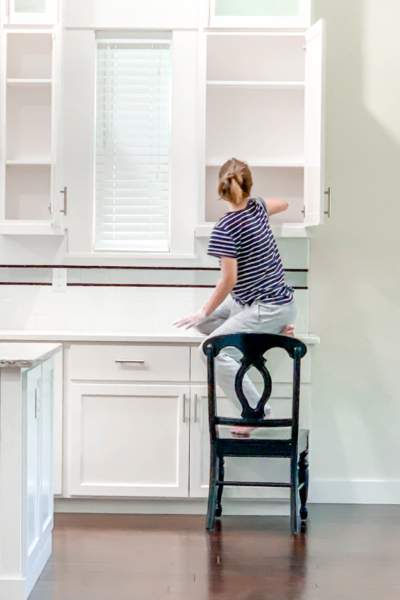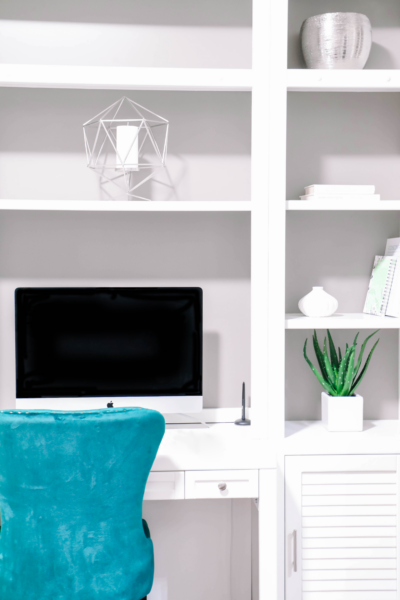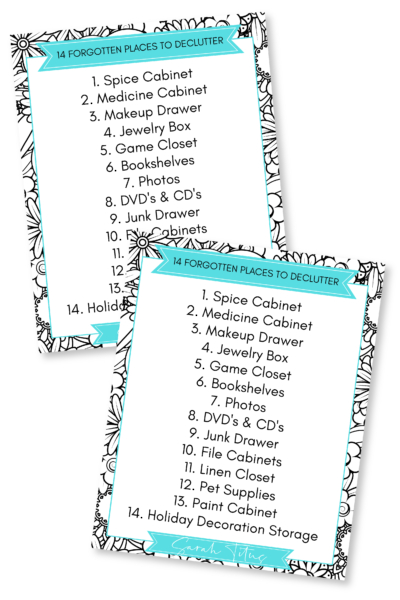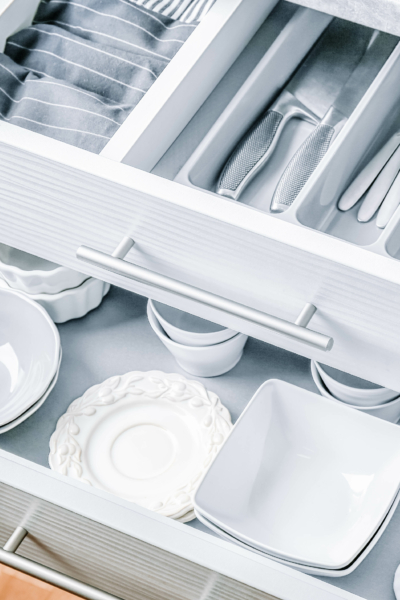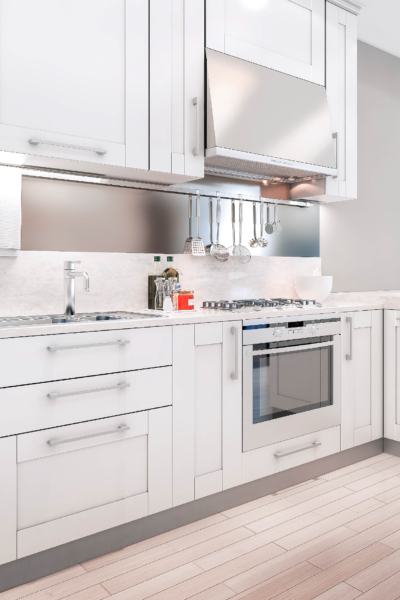Organizing paperwork………you’re cringing right now aren’t you?? I can’t tell you how much I hate paperwork. I think it stems from my career as a banker. So many files and loans, papers for this and that, then the paper money. Everything has to be all organized and neat. Everything has to be facing the right way, all in perfect order. Sign this, initial here. It’s enough to drive a person bonkers!
It’s a scary thing to even think about because for years it has mounded up into a nightmare of a situation in your home. If you were asked for an important document, could you find it within ten minutes? If not, than you are like most of the population the paper nightmare has gotten the best of you.
But, there is hope!
First and foremost, when organizing paperwork at home, you must get your old paperwork under control. This may seem a little scary at first, but if you gather your old stuff and put it in one spot, you can go through it as you have time. Get rid of the things you no longer need and file what you do need to keep in the proper folders in your filing cabinet or drawer. Check out the tips below for some awesome tips for organizing your paperwork! Let’s get rid of that nightmare monster, okay!
Related: Organizing your home can be so difficult. You have no idea where to begin or how to organize your home in a way that makes sense. This organizing essentials guide is the perfect solution. With real life advice, this go-to guide covers almost everything you own! Get started now and say goodbye to clutter forever!
Use the 1-Touch System
This is very simple when you think about it; you are only allowed to touch an item one time! Sounds like something you can do right? Paperwork usually comes in the mail or is brought into the house by us. Once it has crossed the outer limits of your household and comes into your living space you MUST put it where it needs to go. If it is a bill that you need to pay it needs to go in the bill file. If it is paperwork that you will need to reference at a later date, file it. It’s that simple! DO NOT set it on your desk to deal with it later; this will only lead to more work (and late bills). If you use the 1-touch system you will touch it once and be done with it!
Set a Timer
I like to set timers for myself. If you read 2 Organizing Tips That Will Change Your Clutter Forever, you know that you can easily apply this 10 minute rule to your paperwork monster too. Everything you put in that large stack of old paperwork, just go through it 10 minutes a day. Before you know it, you will have gone through all of it, and it’ll all be where it’s supposed to be. Hint…keep a file folder for misc. paperwork. I have a drawer that’s not junk, but it’s papers I honestly don’t know where to file. I know that if my paperwork is not in the labeled folders, it’s in there.
Consider using Online Banking and Bill Pay
This can seem quite scary for some who were not brought up in the age of computers. Take the time to sit down and research how to use an online banking system. If you run into an area that you do not understand, your local bank will help you get it set up and they may even reward you by using it. After you finally make the plunge with the online banking system, you may as well go ahead and work with your bank on setting up your bill paying online. This will make an amazing difference on the amount of paperwork that you have in your home.
When you pay your bills online you still have access to your statements…they just aren’t in paper form. If you want to hang onto them for future reference, save them on your computer as a PDF, then put them in a document file. You may want to also back them up on a USB that holds other bill and banking statements. It’s an easy and paper-free way to keep track of your bills.
Likewise, if you still prefer to get your statements in paper form, some credit unions will allow you to put your mailing address as theirs, so that they get your paper statements and just store them for you, usually up to a year. After a year, you’re not really going to need those statements anyway.
Invest in a Good Paper Shredder
A lot of times things end up being filed because we just don’t want our information thrown in the trash for the world to get their hands on. Invest in a good paper shredder (here’s a nice one with amazing reviews, and it’s only $30!) It will help immensely when it comes to discarding old paperwork. If you want to keep items like old paperwork for bills, set up a folder system to hold them and then discard after one year or after your taxes have been completed if you use them for that. Otherwise you can usually contact the company if you need copies of old bills.
I have found throughout the years that I have never needed any of them yet, but I do save 3-6 months at a time, just to compare the numbers sometimes.
Another good way to make sure that your personal information isn’t out there for the world to see is to keep an eye on your community’s calendar (or those of neighboring towns.) Many towns have paper shredding events. All you do is take your bills and other documents to a set location and watch as they are torn into bits and pieces…never to be viewed again.
Invest in a Filing System
Don’t get too concerned over finding the best home filing system ideas. All you need is a simple file box or drawers and some hanging file folders. Make sure you have plenty of extras when you begin because you will quickly find out when you first start a filing system that things crop up that you didn’t think of in the beginning. It will take you a bit to figure out what sort of system works for you, but stick with it and eventually it will become second nature to you. Having this sort of set up will really help you stay organized.
When you’re deciding where to put your filing system, think about places that will be easy to access and will be safe from water damage. If you choose your basement, consider elevating your filing system (by placing it on a wooden platform) in the event that you have an issue with water. Keep in mind that your files need to be available for quick reference.
How to set up your Files
So now you have your files, but what do you do with them? There are several ways that you could organize your filing drawers. One way is to set them up by date. That way, when you’ve hit the 3-6 month mark on bills, you know that they can go to the shredder.
First, you organize your bills by month. January comes first, then February, etc. Next, place them in your filing drawer in that order. Once you’ve got a drawer full of bills, label it (with an adhesive label) with the dates that are in that drawer. That way, if you need to refer to them, you know exactly where you can find them. When it comes time to shred old bills, simply pull the label off of the appropriate drawer and get it ready for the next series of dates.
You may want to put your tax paperwork in your files too. Simply organize your documentation (receipts, medical forms, etc.) in file folders by year. Then place the folders in sequential order in your file. Make sure to label the box or drawer that holds your tax information, so that you can go back to it. Don’t forget that tax paperwork should be kept longer than bills…about seven years is a good rule of thumb.
Invest in Binders
Binders may just become your best friend when it comes to getting your paperwork organized. The nice thing about binders is that they come in different sizes and you can designate one for each important topic.
If you’re like I used to be, you might struggle if asked for a copy of your mortgage, lease, or a birth certificate. Binders help you to get it all together so that you have it all in one place.
First, purchase a series of large (3-inch) binders, binder divider tabs, and clear sheet protectors. You can use baseball card holders to organize your store loyalty cards and social security cards.
Then figure out how you want your binders organized. You might want to have one that holds important documents: birth certificates and social security cards, passports, insurance policy information, etc. and another that holds home purchase/rental information along with documentation on any remodeling that you may have done along the way.
Next, figure out the home filing system categories that you’re going to break each binder into. Remember that this is for your organization, so do it in a way that makes sense to you. Label your binder dividers accordingly, and put them into the binder.
Lastly, put important documents into the sheet protectors and place them in the appropriate section of each binder. Some documents may only need to be 3-hole punched and put into the binder as is. Make sure to label the spine and cover of each binder so that you remember what contents are inside of it.
Similarly, binders can be another great way to store your W-2’s, bank statements, and other tax documents. Rather than storing multiple years in each binder, you may want to purchase 1-inch binders (here’s a set of four 1-inch binders on Amazon) and have each one hold one year’s information. That way it’s a quick and easy way to pull the information if you ever need to do so.
What to do about Really Important Documents
Some of your paperwork holds so much importance that you must find a way to store it in a way that will preserve it for future reference. Some such examples are trust and will information, old family pictures, and investment information. These are the kinds of things that in the event of a catastrophe, you would want to be able to retrieve.
Planning ahead will help you to be sure that your important documents will be there for years to come. One idea is to purchase a fireproof, waterproof safe for your home. Make sure that a trusted family member or friend knows how to access it. This can be a great way to have the peace of mind that your documents are safe.
Another idea for storing your important documents (and other family treasures) is a safety deposit box at your local credit union. Again, make sure that someone else knows how to access it, in the event that you need their help. This is another way to be able to rest easily knowing that your information is safe.
What about Memories?
Paperwork such unsolicited mail, magazines, and newspapers can definitely be a nuisance. Some papers, however, hold special meaning…making them difficult to get rid of. Are your drawers overflowing with notes and pictures from the kids, newspaper clippings of special events and much, much more? Then it’s time to organize your memories, too.
Rather than choosing a single drawer to house all of those papers that bring back memories, purchase a series of plastic bins. Label each one with a different source of memories, for example, kids’ artwork and family memories (from those who have passed). Then go through each artifact that you’ve hung onto to ensure that it is worthy of making it into a bin. If it’s not, recycle it, knowing that you’ll have plenty more to go back to later. If it’s one that you have to keep, put it in the appropriate memory bin.
When choosing where to store your memory bins, make sure to put them in a place where you will have easy access to them, but where they will be safe from the elements. If you have a basement, garage, or attic, that may be a good place to put them.
Organizing your paperwork doesn’t mean having to part with each piece of paper that comes your way…just prioritizing which you really need to keep.
How about Magazines?
If you’re like me, you get magazines and catalogs in the mail that you’ve never subscribed to. In fact, you may get them on a regular basis from all different companies.
Are the tempted to keep the magazine to save an article? Have you found, though, that no matter how much you feel the need to keep an article, you rarely go back to it? This is a great way to get a heaping pile of magazines with the good intention of reading each and every one.
Here’s the thing, if you like an article, tear it out! Keep a stack of JUST those articles in a notebook or a plastic bin, so that the next time you really do want to find the article, you won’t be traipsing through hundreds of pages of dozen of magazines. Simply look through your bin or notebook and you’ll find it easy! This saves a great deal of time for me.
Absolutely have to keep your magazine stack? Go through the stack and commit yourself to only keeping the most current issues. If there is a story or recipe that you feel you can’t live without, then be sure to take it out and put it in the binder (along with other important stories) and recycle the rest. Be sure to allow yourself to only keep as many pages as will fit in the notebook or plastic bin!
If you find yourself not reading the issues that come, or putting them aside for a later time (and not returning to them), you may want to consider canceling your subscriptions. Often times, you can find similar articles online. It will save you the extra effort of organization as well as the cost of receiving the magazines!
Don’t Let Your Paperwork Define You
Above all, know that your paperwork: bills, memories, and magazines alike don’t define the person that you are and when you get control of them, you’ll feel so much better! By putting paper in its place as soon as it enters your home, you’ll get your life (and your home back)!
Once you get your new system up and running and finally get your old paperwork gone through, the hard part will be done, and you can sit back and enjoy your home without all that paperwork clutter. The main thing you will want to keep up on is the 1-touch system. Always remember that you want to touch an item just once….. anything more than that is a waste of your time.


